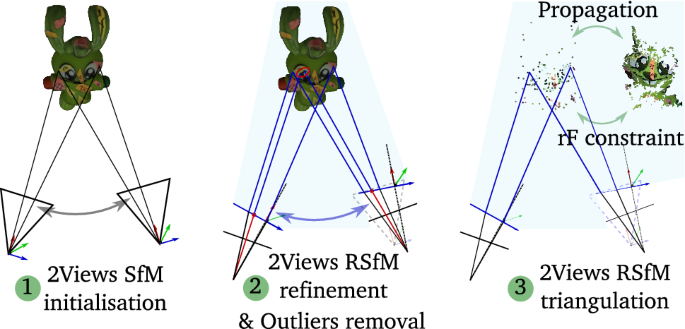
Interface Builder creates the constraints based on the views’ current frames.

When dragging to or from the document outline, Interface Builder does not filter the list of possible constraints based on the gesture’s direction. This is often useful when trying to draw constraints to hard-to-find items, like the top or bottom layout guides. You can use the Control-drag gesture both on items in the canvas and on icons in the scene’s document outline.

Both gestures may include other options (such as setting the view’s relative size). If you drag more or less vertically, you get options to set the vertical spacing, and options to align the views horizontally. If you drag more or less horizontally, you get options to set the horizontal spacing between the views, and options to vertically align the views. Interface Builder intelligently selects the set of constraints based on the items you are constraining and the direction of your drag gesture. When you release the mouse, Interface Builder displays a HUD menu with a list of possible constraints. To create a constraint between two views, Control-click one of the views and drag to the other. As soon as you add one constraint, you are responsible for adding all the constraints needed to create a nonambiguous, satisfiable layout.įor more information on fixing layout warnings and errors, see Debugging Auto Layout. Just keep adding your constraints until your layout is complete. The affected constraints suddenly appear in red, and Xcode generates a number of warnings.ĭon’t panic. Without the prototyping constraints, your layout no longer has enough constraints to uniquely size and position all the views.

Never ship an app with prototyping constraints.Īs soon as you create your first constraint, the system removes all the prototyping constraints from the views referred to by the constraint. Use these constraints to quickly visualize and test a user interface, but then replace the implicit constraints with your own explicit constraints. The app can build and run with the prototyping constraints. When you place a view on the canvas, Interface Builder automatically creates a set of prototyping constraints that define the view’s current size and position relative to the upper left corner. Most developers find that they prefer one approach over the others however, being familiar with all three approaches lets you quickly switch between tools based on the task at hand.įor all three options, start by dragging your views and controls from the Object library onto the scene. Each of these approaches has its own set of strengths and weaknesses. There are three main options for setting up Auto Layout constraints in Interface Builder: You can control-drag between views, you can use the Pin and Align tools, and you can let Interface Builder set up the constraints for you and then edit or modify the results.
#ART CAM MOVE WITH CONSTRAINTS SOFTWARE#
After finishing the software training, CAD DESK students get a Fusion 360 certificate of course completion that helps them to escalate their careers.Working with Constraints in Interface Builder They further get an additional benefit of a transfer facility through which they can move to any of our CAD franchise centers in India even if they are enrolled at CAD DESK Jaipur or at any other center. While doing CAD coaching classes, students also get study materials, e-books, tutorials, and projects along with their student panel.

And, while taking the software training for Fusion 360, students are encouraged to do an Internship and also get an opportunity to go for industrial visits as well.ĬAD DESK imparts 100 % Placement assistance to their students through which students get an opportunity to be placed in various companies in India. CAD DESK provides the best coaching classes to its students in the field of CAD, CAM & CAE. By joining CAD DESK classroom training for Fusion 360, students get an opportunity to learn from our expert trainers who give a great emphasis on delivering the best quality training to each of its learners.įusion 360 provides a wide range of manufacturing and material constraints from high-performing design alternatives. Fusion 360 is widely used in creating effective prototypes prior to manufacturing, which reduces the impact of design changes and the final product can be produced faster.


 0 kommentar(er)
0 kommentar(er)
